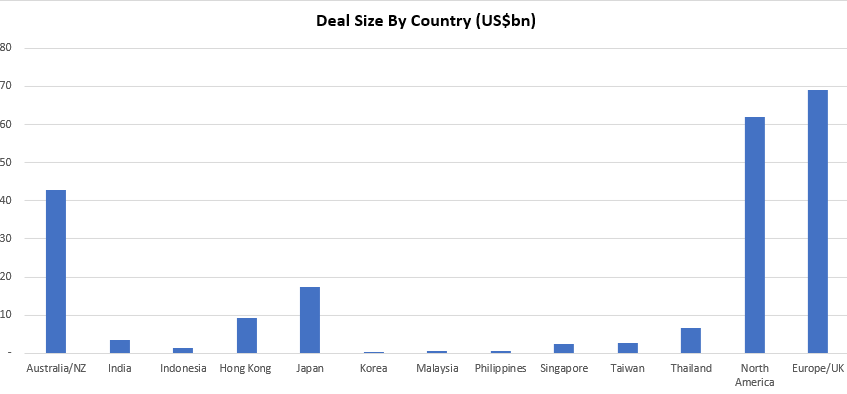
In this briefing:
- U.S. Equity Strategy: Has “the Pullback” Begun?
- Thyrocare Technologies: All’s Not Well with This Wellness Pathology Leader
- Healthscope (HSO AU): Brookfield Makes Investors Wait, BGH Unlikely to Provide Material Upside
- Celgene and Bristol-Myers Squibb – Undervalued and Underappreciated
- Dr Lal Pathlabs: Pricing Pressure, Lower Earnings Growth Leave Room for Downside
1. U.S. Equity Strategy: Has “the Pullback” Begun?

The weight of the evidence suggests that the pullback has begun. This belief is supported by overbought conditions combined with the S&P 500, MSCI ACWI, and nearly all Sectors hitting logical resistance. Assuming the pullback continues, the next question is how deep or damaging will it be? In this report we highlight various market/technical indicators we are monitoring, as well as pointing out attractive set ups within Consumer Discretionary and Health Care Sectors.
2. Thyrocare Technologies: All’s Not Well with This Wellness Pathology Leader

- Thyrocare Technologies (THYROCAR IN) is the fourth largest pathology chain in India and derives 54% of revenues from the wellness/preventive segment (Rs60bn market growing at 20% Cagr). Margins in wellness are ~2x that of illness segment.
- It is positioned as the lowest price provider in the market with some of its tests priced at 50-70% discount to peers.
- It enjoys the highest operating margin in the industry with excellent control of reagent and manpower costs.
- However, hyper competition in the wellness segment is pushing down pricing. Pullback in adspends is leading to loss of market share over FY18-1HFY19.
- Two-thirds of its capital is invested in the radiology business that does not have economies of scale. Business is loss-making and a drag on return ratios.
- We expect Revenue and PAT Cagr of 15% and 12% respectively over FY18-21 in the face of intensified competition against 24% and 19% respectively delivered over FY14-18.
- Softer growth coupled with utilization of free-cash from the clinical pathology business into the capital intensive and loss-making radiology business will weigh on stock performance. We value the stock at 22.5x FY20 EPS- at 25% discount to the industry leader Dr Lal Pathlabs (DLPL IN) . Our target price is Rs 494 implying 10% downside.
3. Healthscope (HSO AU): Brookfield Makes Investors Wait, BGH Unlikely to Provide Material Upside

Healthscope Ltd (HSO AU), Australia’s second-largest private hospital operator, noted today that Brookfield Asset Management (BAM US) is seeking the necessary internal approvals to submit a binding proposal by 31 January. We believe that Brookfield will come through with its binding proposal as the delays are not due to issues cropping up from the due diligence but due to ongoing financing negotiations with multiple banks.
Notably, there is renewed optimism that BGH-AustralianSuper could materialise with a superior proposal. AustralianSuper has three options available, which lead us to conclude that the floor is Brookfield’s Scheme bid with an option of a minor bump from BGH-AustralianSuper.
4. Celgene and Bristol-Myers Squibb – Undervalued and Underappreciated
A dismal 2018 for the pharmaceutical and bio-tech stocks seems far in the rear view mirror. 2019 began with a bang with two blockbuster deals in the pharmaceutical space within days. In this note, we discuss Bristol Myers Squibb’s Co (BMY US) acquisition of Celgene Corp (CELG US) and outline our view that investors should go long BMY.
5. Dr Lal Pathlabs: Pricing Pressure, Lower Earnings Growth Leave Room for Downside

- Dr Lal Pathlabs (DLPL IN) is the largest pathology chain in India and caters to the Rs 600 bn market growing at 15% Cagr. It is strongest in the lucrative NCR and Kolkata markets.
- Management has the best capital allocation track record in the pathology chain space. Network expansion mirrored patient volume growth.
- Patient volume growth has been the strongest among peers.
- However, revenue/patient has been declining as competitive pressure forced them to do away with price hikes for 2 consecutive years (2017-18). Increasing bundling of tests without adequate price hikes leading to sharp decline in revenue/sample.
- Expansion into eastern India with second central reference lab will drive down realizations
- Revenue growth deceleration and Ebitda margin contraction over FY17-18 looks to have stabilized now but are unlikely to revive.
- We expect Revenue and PAT Cagr of 15% and 16% respectively over FY18-21 against 21% and 34% respectively delivered over FY13-16.
- At CMP of Rs 996, Dr Lal trades at 36.1x FY20 EPS. Dr Lal’s steep multiples could see some compression with the lower growth trajectory and once the faster-growing Metropolis lists in the market. Our target price (30x FY20F) is Rs 827 implying 17% downside.
Get Straight to the Source on Smartkarma
Smartkarma supports the world’s leading investors with high-quality, timely, and actionable Insights. Subscribe now for unlimited access, or request a demo below.


































